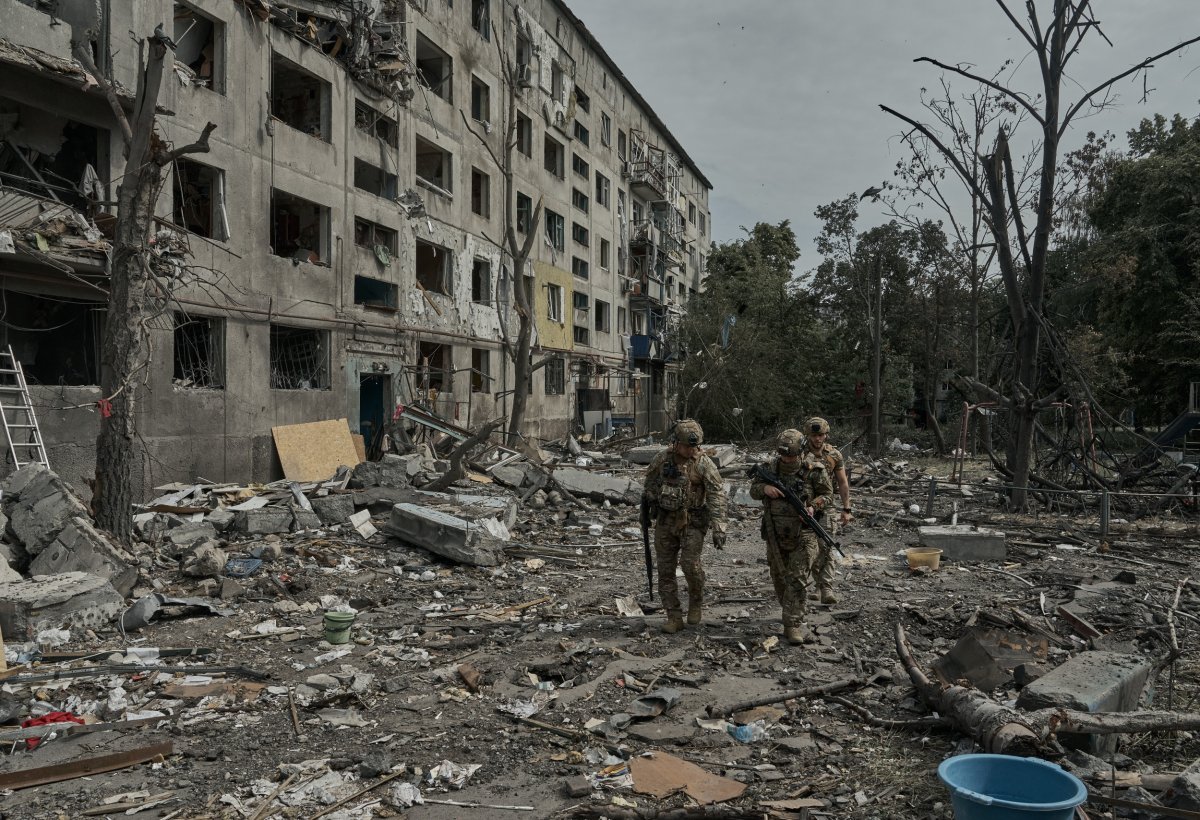Login to Continue Learning
Russian forces are intensifying their operations in Ukraine’s Donetsk region, hoping for a breakthrough that could provide leverage before the summit between President Donald Trump and Kremlin leader Vladimir Putin. According to the Institute for the Study of War (ISW), Russian troops are pushing hard in the area.
Ukrainian sources report that sabotage and reconnaissance groups have infiltrated near Dobropillia, which is northwest of Pokrovsk—the key Donetsk hub that Moscow aims to capture entirely. The ISW suggests that Moscow’s advances could coincide with Friday’s U.S.-Russia summit in Alaska, as indicated by a map from Newsweek showing the current front line.
Newsweek has reached out to the Russian Defense Ministry for comment.
[ An image from June 19, 2025, shows Kyiv’s troops in Pokrovsk, in Ukraine’s Donetsk region. Credit: Kostiantyn Liberov/Getty Images]
Why It Matters
Anticipation is building ahead of Friday’s summit and whether Putin will try to pressure Trump into accepting Moscow’s control over partially occupied areas in exchange for a ceasefire.
The ISW analysis indicates that Putin aims to leverage tactical pushes to seek U.S. concessions, framing the full capture of Ukraine’s Luhansk, Donetsk, Zaporizhzhia, and Kherson regions as inevitable.
What To Know
The ISW assessed that Russian forces had likely recently seized settlements southeast and east of Dobropillia after the Russian Ministry of Defense claimed the capture of Fedorivka, northeast of Pokrovsk. While premature to call these advances an operational-level breakthrough, Moscow hopes for it to develop into one in coming days.
Russian forces used a similar tactic in April 2024. The ISW noted that the upcoming days in the Pokrovsk area will be critical for Ukraine’s ability to prevent accelerated Russian gains north and northwest of the city.
Finnish geopolitical analyst Joni Askola told Newsweek on Tuesday that Russia’s breach near Dobropillia isn’t as dramatic as some portray it—but it is still a serious issue that must be addressed. Askola explained that Russia has a large troop concentration in the area, probing for weak spots and gradually infiltrating by sending small groups without heavy equipment to test defenses.
Groups breaching Ukrainian lines can still be eliminated but pose greater danger if Russia manages to expand flanks and bring in more troops and equipment before that happens. This breach is smaller compared to past ones, but Ukraine has sent units, including from the 1st Azov Corps, to contain it.
The First Corps Azov of the National Guard of Ukraine said on Facebook that they had taken up defensive positions on the Pokrovsk front as Russian troops advanced in small groups toward Dobropillia, bypassing the first line of Ukrainian positions.
What People Are Saying
The Institute for the Study of War stated: “It is premature to call the Russian advances an operational-level breakthrough, though Russian forces likely seek to mature their tactical advances into one in coming days.”
Ukraine’s First Corps Azov posted on social media: “The situation remains difficult and dynamic. The enemy, trying to advance on this front, is suffering significant losses in personnel and equipment.”
Finnish geopolitical analyst Joni Askola told Newsweek: “This is not a breakthrough, nor close to the collapse of the front—at least not yet. Similar situations have occurred before but still require serious attention.”
What Happens Next
A statement by European leaders on Tuesday said borders cannot be changed by force, supporting Kyiv and indicating that any land swap for a ceasefire cannot be considered in Friday’s summit.
However, the statement, notably not signed by Hungary’s Prime Minister Viktor Orban, expressed support for Trump’s efforts to end the war but insisted “meaningful negotiations” could only begin with a ceasefire or significant reduction in hostilities. Diplomatic pressure on the U.S. will likely continue in coming days.
*Update: This article was updated with comments from Joni Askola.*



















